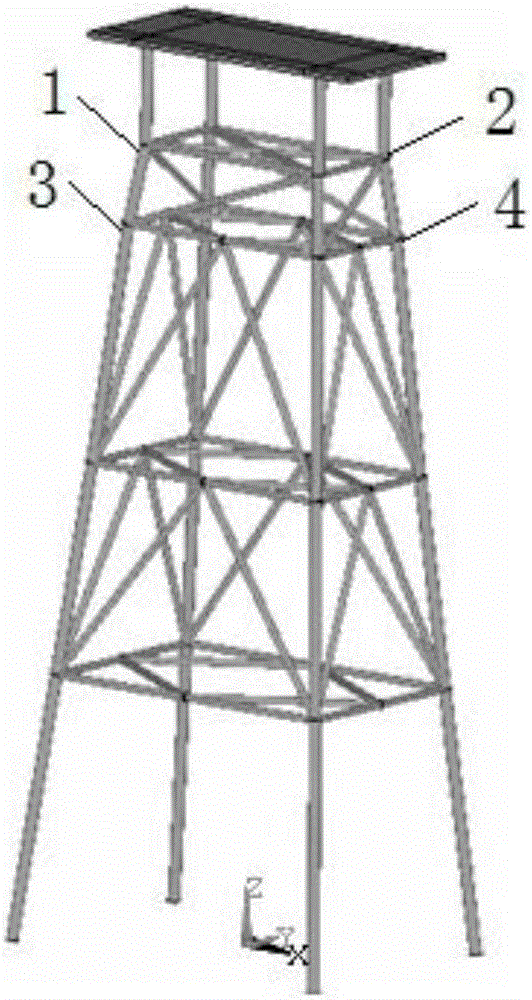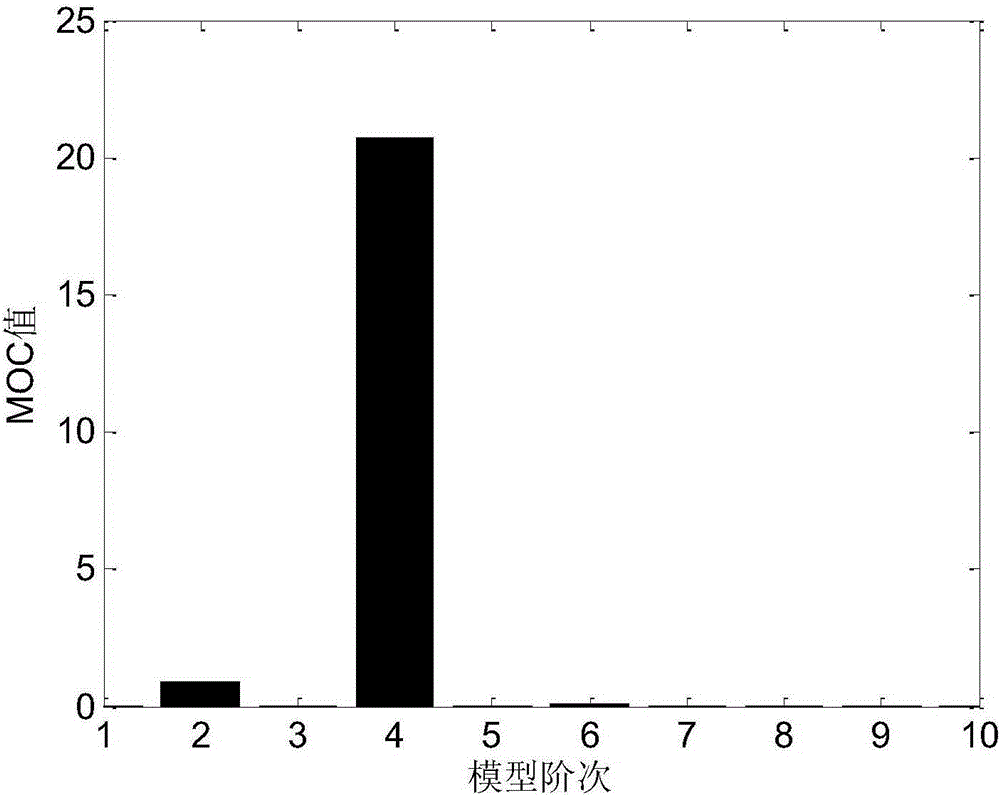Signal noise reducing method for modal parameter identification
A modal parameter identification and signal technology, which is applied in the field of signal processing and can solve the problems of Frobenius norm not being the minimum value, reducing computational efficiency, and false modalities.
- Summary
- Abstract
- Description
- Claims
- Application Information
AI Technical Summary
Problems solved by technology
Method used
Image
Examples
Embodiment Construction
[0070] The present invention will be further described below in conjunction with the accompanying drawings and embodiments.
[0071] The embodiment of the present invention is a jacket type offshore platform model, refer to Figure 2 to Figure 6 .
[0072] Establishment of the finite element numerical model of the jacket type offshore platform:
[0073] The parameters of the finite element numerical model of the jacket type offshore platform are as follows:
[0074] The outer diameter of the pile is 24mm, and the wall thickness is 2.5mm; the outer diameter of the horizontal brace and the diagonal brace is 16mm, and the wall thickness is 1.5mm; the deck is 0.6m long, 0.3m wide, and 0.01m thick; from bottom to top, each layer The heights are 0.5m, 0.9m, 1.35m, 1.5m, 1.7m respectively; the slope of the pile is 1 / 10.
[0075] Ansys software is used to establish the finite element model of the jacket type offshore platform, and the theoretical values of the first two order fre...
PUM
 Login to View More
Login to View More Abstract
Description
Claims
Application Information
 Login to View More
Login to View More - R&D
- Intellectual Property
- Life Sciences
- Materials
- Tech Scout
- Unparalleled Data Quality
- Higher Quality Content
- 60% Fewer Hallucinations
Browse by: Latest US Patents, China's latest patents, Technical Efficacy Thesaurus, Application Domain, Technology Topic, Popular Technical Reports.
© 2025 PatSnap. All rights reserved.Legal|Privacy policy|Modern Slavery Act Transparency Statement|Sitemap|About US| Contact US: help@patsnap.com



